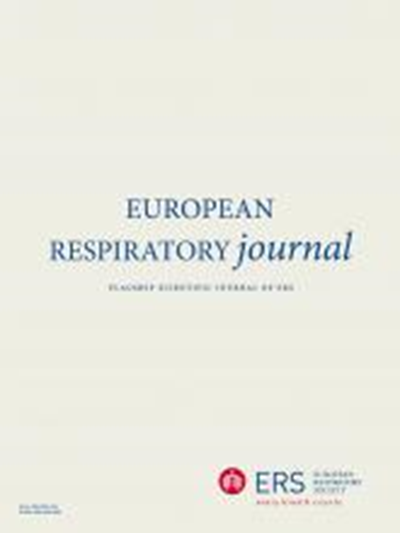Relationship between theratyping in nasal epithelial cells and clinical outcomes in people with cystic fibrosis.
IF 16.6
1区 医学
Q1 RESPIRATORY SYSTEM
引用次数: 0
Abstract
BACKGROUND In people with cystic fibrosis (pwCF), human nasal epithelial cultures (HNECs) can be used to assess response to CFTR modulators. However, thresholds of in vitro responses that predict clinical benefit remain poorly understood. In this study we describe the concordance between in vitro response in HNECs and clinical outcomes in pwCF harbouring the F508del variant, treated with either Lumacaftor/Ivacaftor, Tezacaftor/Ivacaftor or Elexacaftor/Tezacaftor/Ivacaftor. METHODS Response of HNECs to CFTR modulators was assessed by CFTR-mediated chloride current stimulated by forskolin or inhibited by CFTRInh-172 in both pwCF and healthy controls. Clinical response was defined as the change in Forced Expiratory Volume in 1 s (FEV1), Lung Clearance Index (LCI), sweat chloride or the cystic fibrosis questionnaire respiratory domain (CFQr) between baseline and within 3 months after the start of modulator treatment. RESULTS In 58 unique in vitro:clinical pairs, in vitro measures of functional rescue correlated with changes in FEV1, LCI and sweat chloride, but not CFQr. The concordance between in vitro response and clinical outcomes was highest when a composite outcome was used. For example, an in vitro response of 10% of healthy controls had positive and negative predictive values of 90.5 and 100%, respectively, for a clinical response in either FEV1, LCI or sweat chloride. CONCLUSIONS We identified thresholds of nasal epithelial cell theratype response in pwCF to predict clinical benefit from CFTR modulator therapy. The utility of this therapy testing platform to predict a clinical response improves when multiple clinical outcome measures are combined.囊性纤维化患者鼻上皮细胞治疗异型化与临床结果的关系
在囊性纤维化(pwCF)患者中,人鼻上皮细胞培养(HNECs)可用于评估对CFTR调节剂的反应。然而,预测临床获益的体外反应阈值仍然知之甚少。在这项研究中,我们描述了在使用Lumacaftor/Ivacaftor、Tezacaftor/Ivacaftor或elexaftor /Tezacaftor/Ivacaftor治疗的HNECs的体外反应与携带F508del变体的pwCF的临床结果之间的一致性。方法采用福斯克林刺激CFTR介导的氯离子电流或CFTRInh-172抑制CFTR介导的氯离子电流,评价pwCF和健康对照小鼠对CFTR调节剂的反应。临床反应的定义是1秒内用力呼气量(FEV1)、肺清除率指数(LCI)、汗液氯化物或囊性纤维化问卷呼吸域(CFQr)在基线和开始调节剂治疗后3个月内的变化。结果在58对独特的体外:临床配对中,体外功能抢救措施与FEV1、LCI和汗液氯化物的变化相关,而与CFQr无关。当使用复合结果时,体外反应和临床结果之间的一致性最高。例如,10%的健康对照的体外反应,对于FEV1、LCI或汗液氯化物的临床反应,分别具有90.5%和100%的阳性和阴性预测值。结论:我们确定了pwCF患者鼻上皮细胞治疗反应的阈值,以预测CFTR调节剂治疗的临床获益。当多种临床结果测量相结合时,该治疗测试平台预测临床反应的效用得到改善。
本文章由计算机程序翻译,如有差异,请以英文原文为准。
求助全文
约1分钟内获得全文
求助全文
来源期刊

European Respiratory Journal
医学-呼吸系统
CiteScore
27.50
自引率
3.30%
发文量
345
审稿时长
2-4 weeks
期刊介绍:
The European Respiratory Journal (ERJ) is the flagship journal of the European Respiratory Society. It has a current impact factor of 24.9. The journal covers various aspects of adult and paediatric respiratory medicine, including cell biology, epidemiology, immunology, oncology, pathophysiology, imaging, occupational medicine, intensive care, sleep medicine, and thoracic surgery. In addition to original research material, the ERJ publishes editorial commentaries, reviews, short research letters, and correspondence to the editor. The articles are published continuously and collected into 12 monthly issues in two volumes per year.
 求助内容:
求助内容: 应助结果提醒方式:
应助结果提醒方式:


